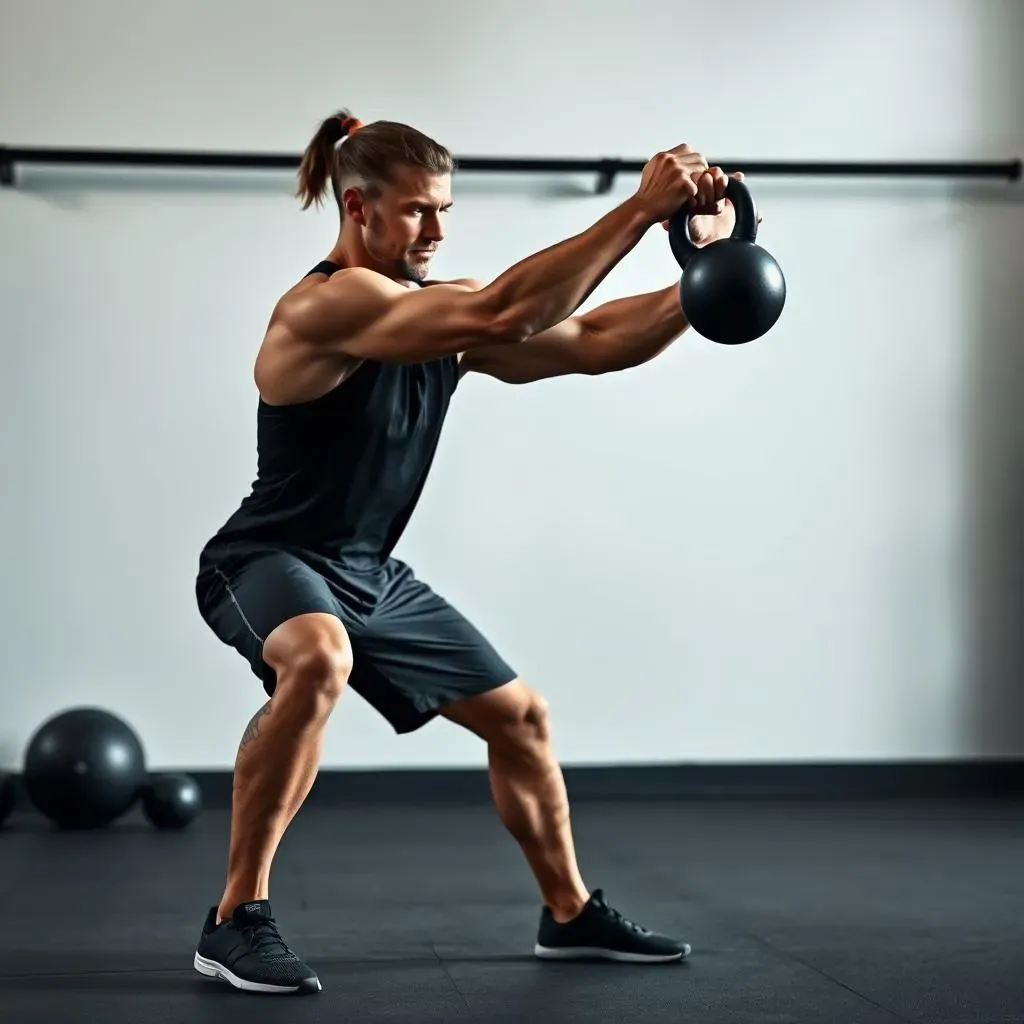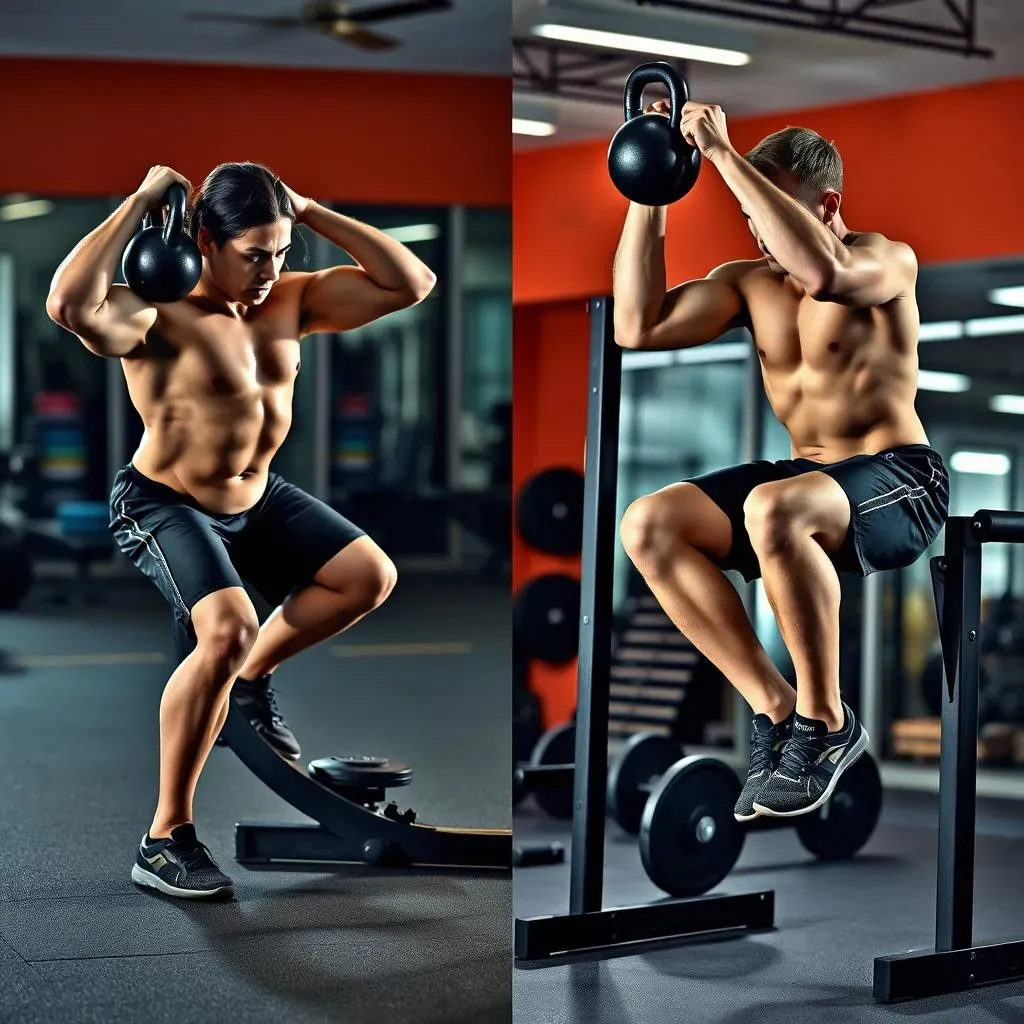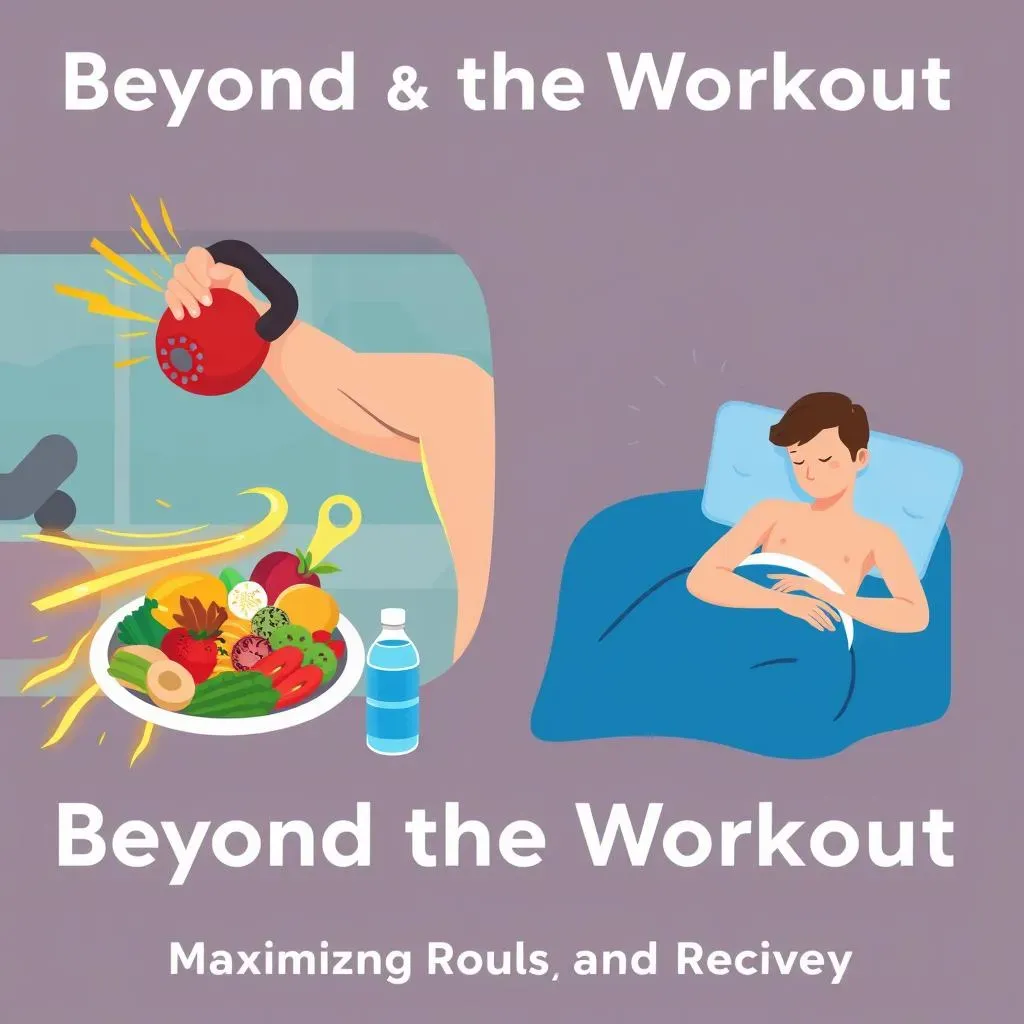Table of Contents
Short on time but big on fitness goals? Enter the **kettlebell swing full body workout**, a dynamic routine designed to torch calories and sculpt muscle in just 30 minutes. Forget endless hours at the gym; this workout combines the power of the kettlebell swing with bodyweight dips for a potent, time-efficient session. We'll break down why the kettlebell swing is so effective for full-body engagement, then dive into the details of the "ladder" workout – a descending rep scheme that keeps your muscles firing and your heart pumping. Ready to learn the proper kettlebell swing form to maximize your results and avoid injury? We've got you covered. Plus, we'll explore modifications and progressions to tailor this **kettlebell swing full body workout** to your fitness level. From beginner to advanced, there's a way to make this routine work for you. Finally, we'll discuss how to optimize your recovery and nutrition to see the best possible gains. So, grab your kettlebell and get ready to swing your way to a stronger, fitter you!
Why the Kettlebell Swing is a Full Body Powerhouse

Why the Kettlebell Swing is a Full Body Powerhouse
The Posterior Chain Igniter
so, you're probably thinking, "It's just a swing, right?" Wrong! The kettlebell swing is like a turbocharger for your posterior chain – that's your glutes, hamstrings, and lower back, all working together. This isn't just about looking good in jeans (though, let's be honest, that's a nice bonus). It's about building real, functional strength.
Think about it: every time you hinge at the hips and drive that kettlebell up, you're engaging those muscles. It's an explosive movement that translates directly to improved power and athleticism. Running faster, jumping higher, lifting heavier – the kettlebell swing helps with it all.
Core Crusher and Cardio Booster
But wait, there's more! The kettlebell swing isn't just a lower body exercise; it's a fantastic core workout too. To maintain stability and control throughout the swing, your abs and obliques have to work overtime. You're essentially getting a dynamic plank with every rep.
And let's not forget the cardio benefits. Done with intensity, kettlebell swings can send your heart rate soaring, making it an excellent option for improving cardiovascular fitness. It's like HIIT training with a weight – efficient and effective. Who needs the treadmill when you've got a kettlebell?
Benefit | Description |
|---|---|
Posterior Chain Strength | Engages glutes, hamstrings, and lower back for explosive power. |
Core Stability | Activates abs and obliques for a dynamic core workout. |
Cardiovascular Fitness | Elevates heart rate for improved cardio. |
The Dip and Swing Ladder Workout: How it Works

The Dip and Swing Ladder Workout: How it Works
The Ladder Concept: Ascend and Descend
Alright, let's get into the nitty-gritty of **The Dip and Swing Ladder Workout**. The "ladder" refers to the rep scheme. You'll start with a higher number of reps for both dips and kettlebell swings, and then decrease the reps each round, creating a pyramid effect. This approach keeps the workout challenging and engaging, as you're constantly pushing yourself but also getting built-in "rest" as the reps decrease. The beauty of this workout lies in its simplicity; two exercises, a straightforward rep scheme, and maximum results.
Imagine starting with 10 reps of each exercise, then moving to 9, then 8, and so on, all the way down to 1. This descending ladder format allows you to accumulate a significant amount of volume without completely burning out. The key is to maintain good form throughout and push yourself to move quickly between sets. Rest only when you absolutely need to, but aim to keep the pace brisk.
Perfecting Your Kettlebell Swing Form

Perfecting Your Kettlebell Swing Form
The Hinge, Not the Squat
this is where a lot of people go wrong. The kettlebell swing isn't a squat; it's a hinge. Think about pushing your hips back like you're closing a car door with your butt. Your knees should be slightly bent, but the primary movement comes from your hips. This hinge motion is what loads your posterior chain and generates the power for the swing. If you're squatting, you're using your quads too much, and you're not getting the full benefit of the exercise.
A good way to practice the hinge is to stand with your feet shoulder-width apart, holding a dowel rod or broomstick along your spine. Hinge at your hips, keeping your back straight and the dowel rod in contact with your head, upper back, and tailbone. This will help you feel the correct movement pattern and ensure that you're not rounding your back. Remember, safety first!
The Hike Pass and the Power Stance
Now, let's talk about the setup. Start with the kettlebell a few feet in front of you. Hinge down and grab the kettlebell with both hands, keeping your back straight. Then, "hike pass" the kettlebell back between your legs, like you're snapping a football. This is your starting position. From here, drive your hips forward explosively, squeezing your glutes and allowing the kettlebell to swing up to chest height.
At the top of the swing, your body should form a straight line from head to toe. Avoid hyperextending your back or leaning back too far. The power comes from your hips, not your back. As the kettlebell swings back down, guide it between your legs, absorbing the momentum with your hips. Repeat the hike pass and continue swinging. Focus on maintaining a tight core and a powerful hip drive throughout the entire movement.
Form Cue | Description |
|---|---|
Hinge, Don't Squat | Focus on pushing hips back, not bending knees. |
Hike Pass | Start with a hike pass to initiate the swing. |
Power Stance | Maintain a straight line from head to toe at the top of the swing. |
Modifications and Progressions for Your Full Body Kettlebell Swing Workout

Modifications and Progressions for Your Full Body Kettlebell Swing Workout
Scaling for Beginners: Mastering the Basics
Not quite ready for the full ladder workout? No problem! The beauty of the kettlebell swing full body workout is that it's easily scalable. If you're new to kettlebells or dips, start with modifications to build strength and confidence. For the kettlebell swings, reduce the weight or even practice the hip hinge movement without a kettlebell at first. Focus on perfecting your form before adding resistance.
As for the dips, if you can't do full dips, try incline push-ups or bench dips. These variations allow you to build the necessary upper body strength to eventually perform unassisted dips. Remember, consistency is key. Start where you are, and gradually increase the difficulty as you get stronger. Don't rush the process; listen to your body and prioritize proper form over speed or weight.
Progressing to Advanced: Adding Intensity and Complexity
Ready to take your kettlebell swing full body workout to the next level? There are plenty of ways to increase the intensity and complexity. For the kettlebell swings, increase the weight, try variations like the one-arm kettlebell swing, or add a jump at the top of the swing for a plyometric challenge. You could also try doing the swings with a wider stance to engage your glutes even more.
To make the dips harder, try adding weight by using a dip belt or holding a dumbbell between your legs. You can also experiment with different dip variations, such as ring dips or Korean dips, which require more stability and control. Another option is to decrease the rest time between sets to increase the metabolic demand of the workout. The possibilities are endless! The most important thing is to continue challenging yourself and pushing your limits.
Progression | Description |
|---|---|
Increase Kettlebell Weight | Use a heavier kettlebell for swings. |
Weighted Dips | Add weight using a dip belt or dumbbell. |
Reduce Rest Time | Minimize rest between sets for increased intensity. |
Beyond the Workout: Maximizing Results and Recovery

Beyond the Workout: Maximizing Results and Recovery
Fueling Your Swings: Nutrition for Performance
you're crushing those **kettlebell swing full body workouts**, but are you fueling your body properly? Nutrition is just as important as the workout itself. Think of your body as a high-performance machine – it needs the right fuel to run efficiently. That means prioritizing whole, unprocessed foods that provide sustained energy and support muscle recovery.
Focus on getting enough protein to repair and rebuild muscle tissue, complex carbohydrates to replenish glycogen stores, and healthy fats to support hormone production and overall health. Don't be afraid to experiment with different meal timings and macronutrient ratios to find what works best for you. And of course, stay hydrated! Water is essential for everything from muscle function to nutrient transport.
Rest and Recovery: The Secret Weapon
Alright, listen up, because this is where a lot of people drop the ball. Rest and recovery are NOT optional; they're essential for seeing results from your **kettlebell swing full body workout**. When you work out, you're actually breaking down muscle tissue. It's during rest that your body repairs and rebuilds those muscles, making you stronger and fitter.
Aim for at least 7-8 hours of quality sleep per night to optimize hormone production and muscle recovery. Incorporate active recovery days into your routine, such as light cardio or stretching, to improve blood flow and reduce muscle soreness. And don't forget about stress management! Chronic stress can wreak havoc on your hormones and hinder your progress. Find healthy ways to manage stress, such as meditation, yoga, or spending time in nature.
Recovery Strategy | Description |
|---|---|
Adequate Sleep | Aim for 7-8 hours of quality sleep per night. |
Active Recovery | Engage in light cardio or stretching on rest days. |
Stress Management | Practice stress-reducing activities like meditation or yoga. |
Swing into Action: Your Full Body Transformation Awaits
The kettlebell swing full body workout is more than just a routine; it's a gateway to a stronger, more resilient you. By combining the explosive power of kettlebell swings with the accessible challenge of dips, you're building strength, endurance, and work capacity, all in a compact 30-minute package. Remember to focus on proper form, listen to your body, and gradually progress the weight and intensity. Make this workout a regular part of your fitness regimen, and you'll be amazed at the full-body transformation you can achieve. So, pick up that kettlebell and start swinging towards your goals!